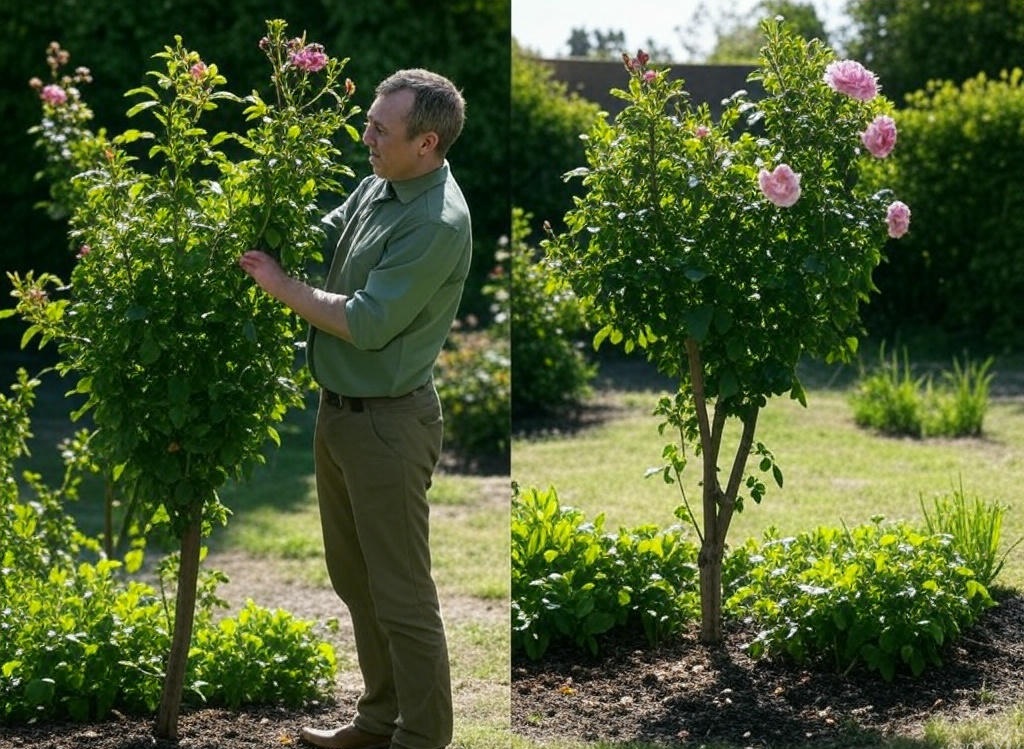Pruning is one of the best ways to ensure your plants grow healthy, strong, and full of vibrant blooms. It may seem like a daunting task, but with the right approach, pruning can make a huge difference in the overall health and appearance of your plants. Here’s how to prune your plants for optimal growth.
Why Pruning is Important
Pruning is essential for a few reasons:
- Encourages Healthy Growth: By removing dead or damaged branches, you allow the plant to direct its energy toward new, healthy growth.
- Improves Air Circulation: Pruning helps maintain good airflow through the plant, reducing the risk of diseases and pests.
- Promotes Flowering and Fruiting: Many plants need to be pruned to encourage more blooms or fruit. Proper pruning allows sunlight and nutrients to reach the right parts of the plant.
- Controls Size and Shape: Regular pruning keeps your plant’s size in check and helps maintain a neat, attractive shape.
When to Prune
The timing of your pruning is crucial:
- Late Winter or Early Spring: Most plants benefit from pruning before the growing season begins, while they are still dormant. This gives the plant time to heal and start growing fresh new growth in the spring.
- After Flowering: For flowering plants, prune after they have finished blooming. Pruning them too early can remove buds and prevent flowers from developing.
- During the Growing Season: Light pruning can be done during the growing season to remove dead or diseased growth and maintain shape, but avoid heavy pruning, as this can stress the plant.
Tools You’ll Need
Having the right tools makes pruning much easier and more effective:
- Pruning Shears: These are perfect for small to medium-sized stems and branches.
- Loppers: Larger loppers are useful for thicker branches that shears can’t handle.
- Saws: For very thick or old wood, a pruning saw can help get the job done without damaging the plant.
- Gloves: Protective gloves are a must, especially when handling thorny plants or plants with irritants.
How to Prune Your Plants
- Remove Dead or Diseased Growth
Start by cutting away any dead, diseased, or damaged branches. These can attract pests and diseases, so removing them helps keep the plant healthy. Make clean cuts near the base of the branch or just above the node (where a leaf or bud is attached). - Cut Back Leggy or Overgrown Branches
If your plant is becoming leggy (too long and spindly) or overgrown, prune the stems back to a healthy, strong node. This encourages new, bushier growth. For woody plants, cutting just above a node will stimulate growth in that area. - Thin Out Overcrowded Areas
When a plant’s branches are crowded, it’s important to thin them out. Cut some branches back to the base to improve air circulation and allow light to reach the inner parts of the plant. This is especially important for plants prone to fungal issues. - Shape the Plant
To keep your plant looking neat, prune to shape it. For shrubs and bushes, remove any uneven or stray branches to create a balanced look. For trees, remove any crossing or inward-growing branches to ensure the plant has a strong structure. - Encourage Flowering and Fruiting
Some plants, like roses or fruit trees, need specific pruning to encourage flowering or fruiting. For roses, cutting back to a healthy bud can stimulate new blooms. For fruit trees, prune the central branches to create an open structure that allows sunlight to reach the fruit-bearing parts of the plant.
Pruning Different Types of Plants
- Flowering Plants
Prune flowering plants like hydrangeas and roses after they’ve bloomed. For hydrangeas, cut back the spent flowers and trim the plant to shape, removing any dead wood. For roses, prune back the stems after flowering to encourage new growth and more blooms. - Shrubs and Bushes
Shrubs should be pruned to maintain their shape and remove dead wood. For dense shrubs, thin out the center to improve airflow. Always prune just above a node to encourage new growth. - Trees
Prune trees in late winter or early spring before the sap starts flowing. Remove any weak, crossing, or diseased branches. For fruit trees, focus on cutting back old wood to encourage new growth that will produce more fruit. - Indoor Plants
Indoor plants like ivy or pothos can benefit from pruning to keep them from becoming leggy. Trim back the vines to promote fuller, bushier growth. For flowering indoor plants, remove spent blooms to encourage new flowers.
Pruning Mistakes to Avoid
- Don’t Cut Too Much: Pruning too aggressively can stress your plant. Always prune in moderation and remove no more than a third of the plant at once.
- Avoid Cutting into Old Wood on Some Plants: For some plants, like azaleas or camellias, cutting into old wood can prevent new blooms from forming. Be sure to know the specific needs of the plant you’re pruning.
- Use Sharp Tools: Dull pruning tools can tear the plant tissue, leading to damage. Make sure your tools are sharp to make clean cuts.
Final Tip
Pruning might seem intimidating at first, but with the right tools and knowledge, it’s an easy and rewarding task. Regular pruning not only keeps your plants looking great but also helps them grow stronger and healthier. Remember to always research specific plants to understand their pruning needs, and your plants will thank you with lush growth and vibrant flowers!

Leave a Reply